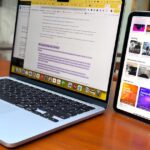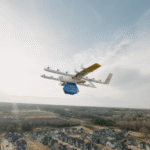I’ve never let a camera bump bother me. They’re a fact of modern smartphone life, as brands shove bigger and better cameras into a small space which is also occupied by processors, batteries, and all kinds of other tech. But going forward, things will never be the same as I’ve been using the Google Pixel 9a for a few days, and I can tell you, the slimline life is so good.
Is it really that different?
The Google Pixel 9a doesn’t have the now-iconic Pixel visor or island containing the cameras. Instead, it doesn’t have anything as its two cameras live inside a stadium-shaped glass unit that sits almost flush with the surface of the rear panel. It’s raised by a millimeter or so, which you only notice when you run your finger across it. A flash unit sits alongside it, and it’s entirely built into the back of the Pixel 9a.
It looks unlike pretty much every other modern smartphone and its appearance is so unusual, it could almost be called a daring design choice. Looks aside, what are the real world benefits here? There are two main ones. The first is the Pixel 9a has perfect balance because there’s no whopping camera module adding weight, or getting in the way of where your fingers want to naturally rest. It’s more pleasant to hold in portrait and landscape than many other phones without a slimline design.

The second is a to do with everyday life. It slides in and out of your pocket so easily and doesn’t get caught on anything. I appreciate this isn’t a problem as such, but when you first notice you haven’t been fighting with getting your phone in our out of your pocket, then you’ll understand. It also sits mostly flat on a table, another rarity in today’s world of periscope zoom cameras and 1-inch sensors. I still want those things, but not in every smartphone, and Google has proved big camera modules could be as much of a marketing ploy as cramming multiple cameras on the back of a budget phone.
What’s the phone like?

I’ve been using the Pixel 9a for a couple of days, so am in no position to fully review it yet. However, early signs are this is an absolutely fantastic smartphone that’s going to cause serious trouble for a lot of the competition. I’m not just talking about devices like the Samsung Galaxy A56 and the Nothing Phone 3a Pro either, I’m talking about the OnePlus 13R, the Google Pixel 9, and the Apple iPhone 16E.
A lot of this is down to the great first impression the Pixel 9a makes. The smoothed body is one thing, but the metal chassis and the way the entire body successfully follows the Pixel 9 series’s perfect in-hand comfort, means it immediately feels just like Google’s more expensive phones. Yes, there’s a noticeable bezel around the screen and at almost 9mm it’s pretty chunky, but after a while you don’t really notice, and it certainly doesn’t change the way the phone performs.

I’m still in the “getting to know you” phase of a new smartphone while Android gets everything in place so it runs in optimal condition based on your use. However, I’m still well on the way to getting five to six hours screen time out of its first battery charge, and that’s with the extra power required during setup. The Tensor G4 processor is the same as you find in other Pixel 9 phones, and it didn’t stutter or get hot during an hour-long session of Magic the Gathering: Arena.
Does it take good photos?

Has Google’s decision to flatten the camera module impacted camera performance? I’ve only taken a few dozen photos with the Pixel 9a so far, so it’s impossible to comment too much. However, first impressions are decent, but with a few reservations that will only be resolved the more I use it, and by comparing it to the competition.
The Pixel 9a’s 6.3-inch Actua Display doesn’t do the photos justice when you look at them on the phone, and when you’re taking them it’s not as anti-reflective as the Apple iPhone 16E’s screen either. It means photos appear washed out and less vibrant than I felt they should be at all times during the process, but issues were less noticeable once I transferred the photos over to my computer and looked at them on a monitor. To my eyes and at this early stage, there’s still something not quite right about the dynamic range and exposure.
Google upgraded the main 48-megapixel camera on the Pixel 9a, so it may just be some early-version software teething issues, as I’m using it ahead of launch. Plus, one person’s poor exposure is another person’s natural color palette, and you can be the judge looking at the images I’ve already taken with the phone in the gallery above. It’s certainly not awful, but I was hoping for a little more pop than I’ve seen so far. The software’s newness is also showing up elsewhere, with the Quick Settings pull-down menu missing all the text from the boxes. I don’t think it’s me, but it does make me wonder if there’s a software update arriving before full release to tighten things up.
Is the Pixel 9a an instant buy?
I’m definitely smitten with the Google Pixel 9a’s hardware, design, and performance. Even a couple of days into life with it, I’m confident it will fit right in without much fuss at all. It may not be able to use a camera module as a design focal point anymore, but the very lack of it makes it an interesting shape these days. It shouldn’t be a seen as a daring choice, but it is, and it brings real world benefits with it. I think a lot of people are going to love the Pixel 9a’s flat shape.
It’s really too early to say much about the rest of the phone, although my initial impressions are generally very positive. I really need to use the camera a lot more to understand if it lives up to expectations though, and only longer term use will reveal if the battery life and Tensor G4’s performance continue to rival other devices. But it’s shaping up to be a brilliant phone, except I’m holding back on saying it’s an instant must-buy for now.

In the back of my mind is the fact Google delayed the release of the Pixel 9a, and this does not happen without reason. If there’s trouble brewing inside I haven’t seen it yet apart from the odd Quick Settings issue, but previous experience with Pixel phones tells us total reliability is not a given, and it does mean I’d hesitate to rush out and buy one before reviews where the phone has been used for at least a week or two show up.
Read the full article here
















